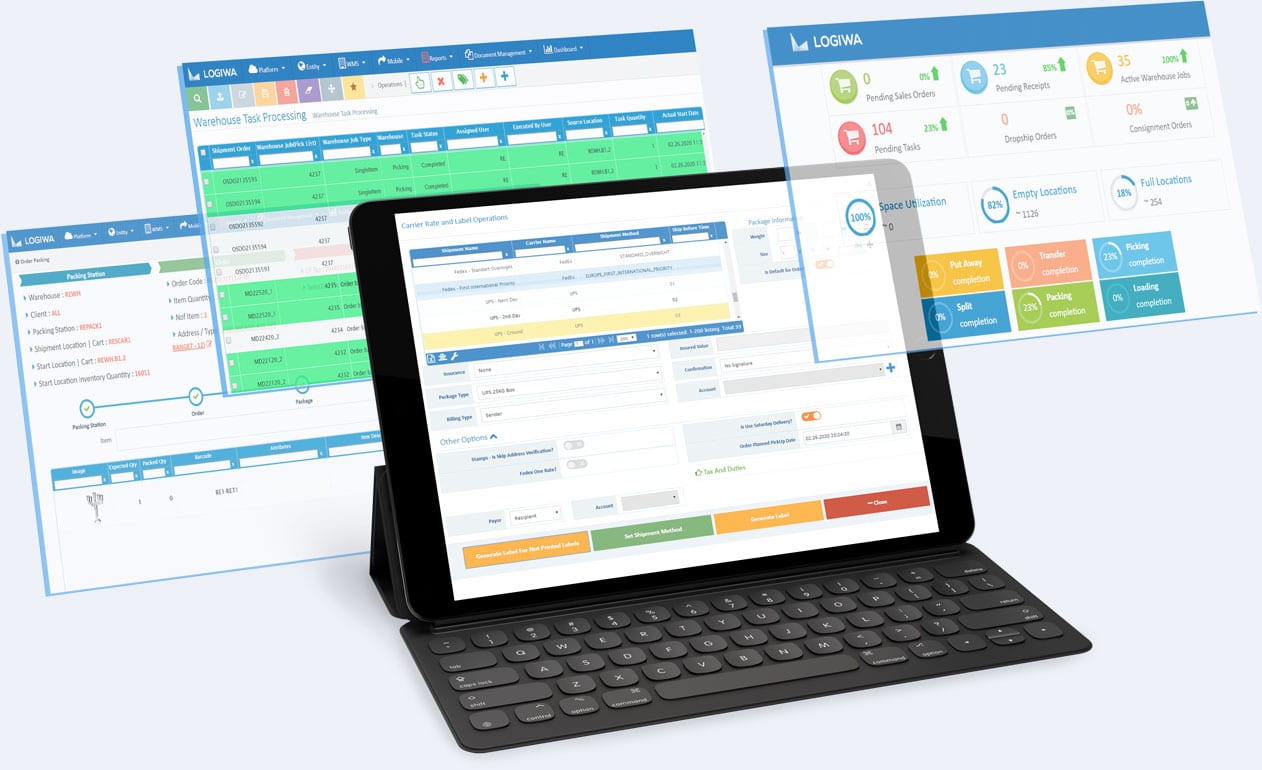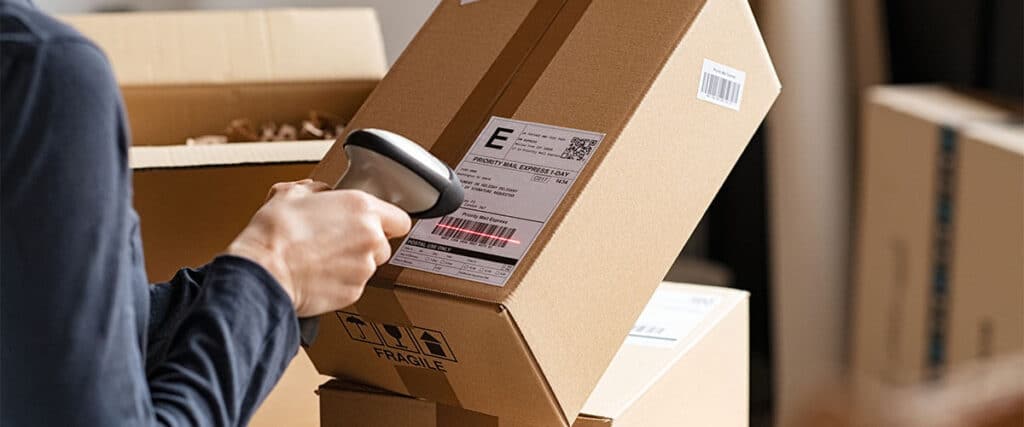When it comes to ecommerce and high-volume order fulfillment, shipping may be one of the easiest and riskiest processes to get wrong. Even if your receiving and putaway processes are highly efficient and your retrieval, sorting and packing operations solid, orders can still fail at the end of workflows in the final stages of delivery.
If your orders struggle to arrive at the correct location within the promised timeframe, you are pretty much guaranteed to lose money and future customers. From printing accurate packing slips and return labels, to keeping buyers updated on the status of their orders, having a streamlined shipping approach is vital to achieving fulfillment excellence. But unless you carry out your own last-mile delivery, you likely depend on a shipping company for assistance.
Modern warehouse management systems (WMS) platforms simplify the shipping process by integrating with shippers and carriers directly. Integrated shipping allows for the exchange of online orders, warehousing data, and transportation logistics information within one system to ensure fulfillment success. Let’s discuss how integrated shipping works and the best practices for making integrated shipping work for your business.
In this guide, we’ll explore:
What is Integrated Shipping? How Does it Work?
Integrated shipping is the process of unifying online ecommerce order information with both your warehouse operating system and shipping carriers to coordinate fulfillment workflows and get orders out the door faster. This helps drive growth and increase customers’ lifetime value (CLV) without adding additional software to your tech stack.
Here’s what the ideal integrated shipping process might look like, so you can see how this concept actually functions:
- A customer order is received by your online store or marketplace channel.
- Your integrated inventory management system (most likely a WMS) registers the order and automatically identifies the closest warehouse with available stock to the customer’s location while obeying any additional shipping rules you have in your system.
- Your warehouse then fills the order including packing items with labels, packing slips, return labels, etc. prepared with the help of the data from your shippers/carrier integration.
- Finally, the order gets handed off to a transportation service provider (many of which provide features like address validation to ensure accuracy). If you are integrated with more than one carrier, the carrier with the best price, availability, and service will be chosen according to your business rules to complete the delivery on-time.
When executed correctly, manual oversights are avoided, processes can be completed in a fraction of the time, and cost-savings are increased with integrated shipping. That said, there are still some best practices you can employ to enhance this fulfillment strategy.

Transform your warehouse to a DTC fulfillment center
Best Practice #1: Integrate with Multiple Carriers/Shippers
While you might feel comfortable sticking to one shipping service or carrier – especially one you have a pre-established relationship with – integrating with multiple providers is ideal for overseeing cost-effective, expedient fulfillment. By integrating with more than one shipping carrier, you are not only able to diversify the services you can offer, but you can decrease the overall spend needed to accomplish last-mile delivery.
Integrate with multiple shippers to ensure you have multiple rate options to choose from and a dependable geographic reach. Think of it this way: if you have multiple shipping networks and carriers to turn to, your fulfillment network also grows. This improves the speed with which you can accomplish fulfillment, which in turn benefits your customer and client satisfaction.
Best Practice #2: Personalize Your Automation Rules
Like all high-efficiency warehouse processes, your approach to integrated shipping should be customized to match your unique operational needs and powered by automation. Exchanging shipping information with your warehouse and carriers based on the orders in your ecommerce channels can be streamlined with shipping integrations, but the success of those integrations still depends on how your WMS is set up.
In other words, make sure that your warehouse management system is configured with all the necessary automation rules for optimizing the results of your shipping integrations. Assign identifiers to specific orders or automatically assign a specific carrier/service type based on predetermined criteria. That way, when an ecommerce order arrives, your fulfillment processes and carriers can proceed without slowing down to process decisions manually.
Here’s an example: A customer may be a VIP member of your ecommerce store due to a membership or long-term loyalty. When their order gets placed, your system knows to qualify them for free shipping or a reduced rate with a more expensive carrier. Check out Logiwa’s shipping automation blog for a list of popular shipping automation rules.
Best Practice #3: Optimize Your WMS
The right warehouse management system (WMS) is just as important to shipping success as the carrier integrations you choose. If your WMS does not have the following characteristics, it may be time to consider upgrading your fulfillment solution along with your integrations:
- Automated Shipment Rules – Add tags, weights, categories, billing, address, or other rules automatically to save time on administrative tasks
- Order routing – Locates the nearest warehouse with order items in stock to fulfill orders faster
- Rate Shopping – Helps identify the most cost effective carrier for each of your orders
- Group shipping options – Allows you to save more on shipping by grouping the same shipping options to get the cheapest rate with each carrier
- Shipping Box Suggestion – Reduces packing time by automatically recommending the best box size based on the product-specific volume, clients, ideal dimension, carrier requirements, etc.
Logiwa’s ecommerce shipping software is part of our complete cloud fulfillment solution, and was built specifically for high-volume B2C and DTC businesses. Our solution helps save you money and reduces waste within your facilities by streamlining shipping operations and giving you access to a wide range of carriers and 3PL options. Visit our integrations page for more information.
Learn more about Logiwa’s smart ecommerce technology and approach to integrated shipping at: https://www.logiwa.com/products/ecommerce-shipping-software.
Ship more with a fully integrated Warehouse Management System that connects with 200+ ecommerce
Warehouse Management
Modern digital WMS powers a modern fulfillment experience





